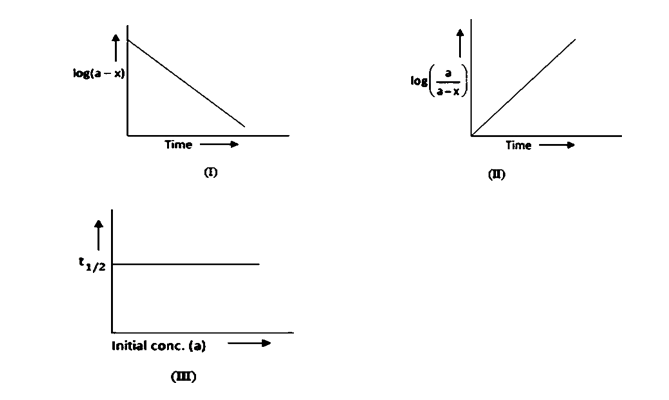For a zero order reaction, the initial concentration of the reactant =[A]0 and after time 't' from the initiation of the reaction, the concentration =[A] . What will be the nature of the graph of '[A]' vs 't,Solution in Bengali
Step by step video & image solution for For a zero order reaction, the initial concentration of the reactant =[A]_(0) and after time 't' from the initiation of the reaction, the concentration =[A] . What will be the nature of the graph of '[A]' vs 't, by Chemistry experts to help you in doubts & scoring excellent marks in Class 12 exams.
Topper's Solved these Questions
- BOOK - CHHAYA PUBLICATIONCHAPTER - CHEMICAL KINETICSEXERCISE - EXERCISE (Fill in the blanks)22videos
CHEMICAL KINETICS
- BOOK - CHHAYA PUBLICATIONCHAPTER - CHEMICAL KINETICSEXERCISE - EXERCISE (SHORT ANSWER-TYPE QUESTIONS)36videos
CHEMICAL KINETICS
- BOOK - CHHAYA PUBLICATIONCHAPTER - CHEMICAL KINETICSEXERCISE - MCQ HOTSPOT (More Than One Correct Type )18videos
CHEMICAL KINETICS
- BOOK - CHHAYA PUBLICATIONCHAPTER - BIOMOLECULESEXERCISE - Practic Set 291videos
BIOMOLECULES
- BOOK - CHHAYA PUBLICATIONCHAPTER - CHEMICAL THERMODYNAMICSEXERCISE - Practice Set 615videos
CHEMICAL THERMODYNAMICS
Similar Questions
The rate of a reaction is directly proportional to the ………….
01:07View SolutionWhat do you mean by average rate and instantaneous rate of a reaction ? Give their mathematical expression.
View SolutionFactors which affect rate constant of a reaction are -
01:37View SolutionWrite down the structure of tripeptide Gly-Ala-Val.
01:03View SolutionThe condition for spontaneity of process is
View SolutionIf the graph of concentration of [A] vs T for completion of reaction is a straight line, then the order of reaction is
05:47View SolutionWhich among the following plots are linear (a -x) is the concentration of reactant remaining after time , t (a) (a - x) vs t , for a first order reaction (b) (a - x) vs t , for a zero order reaction (c) (a - x) vs t , for a second order reaction (d) 1/(a - x) vs t , for a second order reaction
04:40View SolutionWrite the equation relating [R], [R]_(0) and reaction time 't' for a zero order reaction. [R]= concentration of reactant at time 't' and [R]_(0)= initial concentration of reactiant.
03:52View SolutionDrawn the graph that the concentration 'R', of the reactant and 't' the reaction time for a zero Order reaction.
08:29View SolutionIf 'a' is the initial concentration of the reactant, the time taken for completion of the reaction, if it is of zero order, will be
03:49View SolutionThe initial concentration of the reactant in a zero order reaction is 1.386mol.L−1 The half-life of the reaction is 20s. Calculate:
the concentration of the reactant after 30s from the initiation of the reaction.05:25View SolutionThe initial concentration of the reactant in a first order reaction is a . It takes time t for the completion of noth fraction of the reaction. Will it take time 2t for the completion of the same fraction if the initial concentration of the reactant is made twice ?
02:24View SolutionWhat is slope of the graph of log[A] vs t for a first order reaction, where [A] is the concentration of reactant at any time t during the reaction.
02:01View SolutionPlot a graph of concentration of a reactant at time t, [ (a-x)] against time for a first order reaction .Here a = initial concentration of the reactant an x = change in concentration of the reactant at any time 1 during the reaction.
05:25View SolutionWhich of the following is/are correct for the first order reaction ? (a is initial concentration of reactant, x is concentration of the reactant reacted and t is time)
 View Solution
View Solution

